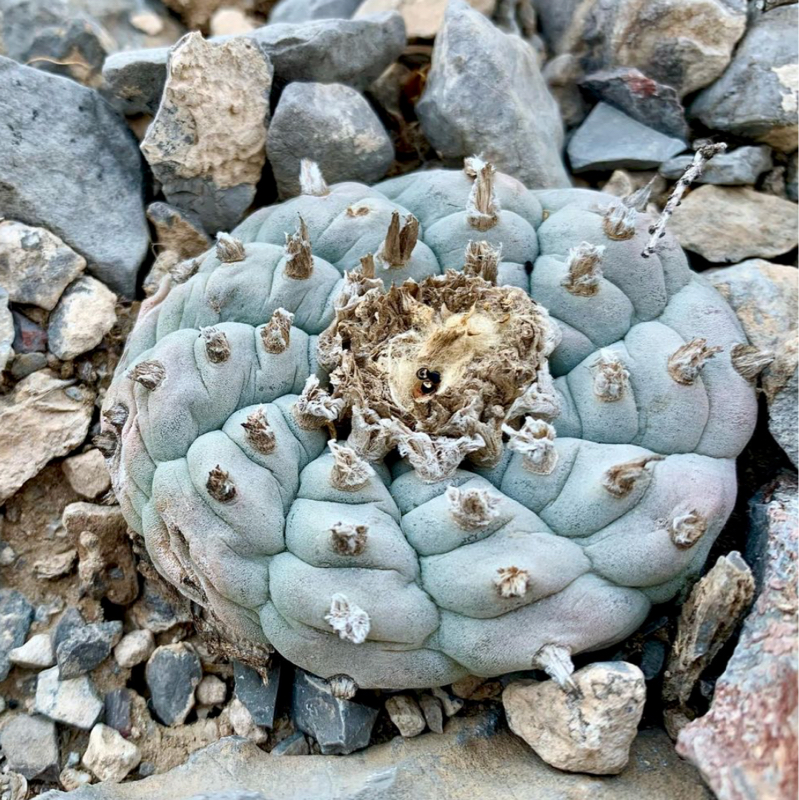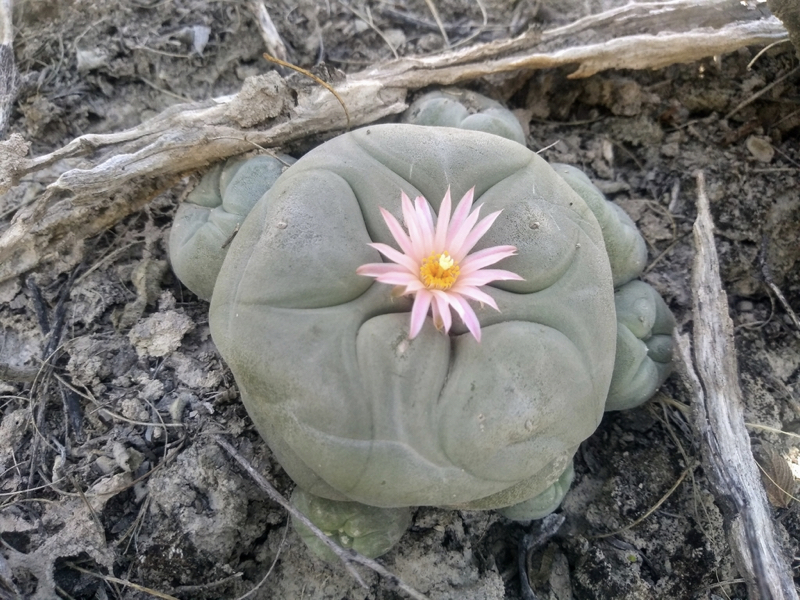Lophophora
Posted by Grace on November 14, 2023
Quick Facts
- Native Habitat: Southern through northeastern and north-central Mexico to Querétaro in central Mexico.
- Family: Cactaceae.
- Water: Drought-resistant, requires minimal watering.
- Sunlight: Thrives in full sun but can tolerate partial shade.
- Soil: Well-draining, sandy or rocky soil mix.
Contents
Why it is called Lophophora?
Lophophora, commonly known as Peyote, derives its name from the Greek words "lophos" meaning crest and "phoreo" meaning to bear. This nomenclature refers to the plant's distinctive appearance, characterized by a central crown or button-like structure atop its body.
The Appearance of Lophophora
Leaves
Lophophora is a small, spineless cactus with rounded or oval-shaped stems that resemble buttons or discs. It lacks true leaves; instead, it features tubercles, which are raised, button-like structures on its surface.
Flowers
During the blooming season, typically in spring, Lophophora produces stunning white or pink flowers that emerge from the top of the plant. These flowers are relatively small but exude a delicate beauty, contrasting with the plant's rugged appearance.
Species of Lophophora
There are several recognized species of Lophophora, with the most well-known being Lophophora williamsii, commonly referred to as Peyote.
Lophophora williamsii
Lophophora williamsii, commonly known as Peyote, is the most renowned and culturally significant species within the Lophophora genus. Native to arid regions of Mexico and southwestern Texas, Peyote has a rich history of traditional use among certain indigenous cultures for its psychoactive properties. This small, spineless cactus features rounded or oval-shaped stems with button-like tubercles. During its flowering season, typically in spring, Peyote produces white or pink flowers. It contains psychoactive compounds, primarily mescaline, which gives it its hallucinogenic effects.
Lophophora diffusa
Lophophora diffusa is another species within the Lophophora genus, but it differs significantly from Lophophora williamsii in terms of its psychoactive properties. Unlike Peyote, Lophophora diffusa is not known for containing significant amounts of mescaline or for its psychoactive effects. It shares some physical characteristics with other Lophophora species, such as rounded or disc-shaped stems with tubercles. This species is also native to arid regions but does not hold the same cultural or historical significance for its hallucinogenic properties as Lophophora williamsii does.
How to Care for Lophophora
Light
Lophophora thrives in bright, direct sunlight. Placing it near a south-facing window or in a spot where it can receive ample sunlight is ideal. However, it can tolerate some shade, especially during the hottest parts of the day.
Watering
Being a desert plant, Lophophora is adapted to survive in arid conditions and requires minimal watering. Allow the soil to dry out completely between watering sessions to prevent root rot. During the growing season (spring and summer), sparingly water the plant.
Soil
Use a well-draining soil mix, preferably a combination of sandy and rocky soil to mimic its natural habitat. Avoid heavy, water-retentive soils that can cause moisture-related issues.
Temperature
Lophophora prefers warm temperatures, thriving in a range between 70°F to 90°F (21°C to 32°C) during the growing season. It can tolerate cooler temperatures but should be protected from frost.
Humidity
This cactus doesn't require high humidity and can adapt well to dry indoor conditions.
Fertilizing
During the growing season, you can feed Lophophora with a diluted, balanced cactus fertilizer. However, it's crucial to avoid over-fertilizing, as this can harm the plant.
Pruning
Minimal pruning is needed for Lophophora. Remove any dead or damaged parts using clean, sterilized tools to prevent infections.
Repotting
Repot Lophophora only when necessary, typically every few years. Use a slightly larger pot and refresh the soil mix.
Dormancy
Lophophora experiences a period of dormancy in winter when growth slows down. During this time, reduce watering to mimic its natural cycle.
Pests and Diseases
Generally, Lophophora is resilient against pests and diseases. However, overwatering can lead to root rot, and scale insects may occasionally appear. Treat pest issues promptly with appropriate methods like neem oil.
Need tools for succulent propagation and repotting? Here are my go-to tools: mini tool set (including syringe 💉, gloves 🧤, tweezers 🪤, dust blower 💨, tiny shovels 🛠️) and well-draining mix 🌱.Is Lophophora Toxic to Pets?
Lophophora contains psychoactive compounds and is toxic to pets if ingested. Keep it out of reach of animals to prevent any potential harm.
How to Propagate Lophophora
Propagation of Lophophora is primarily done through seeds, as it can be challenging to propagate from cuttings. Seeds should be sown in well-draining soil and kept warm and lightly moist until they germinate.
Where Can I Buy Lophophora?
Lophophora is available for purchase at specialized nurseries, online retailers, and botanical gardens that specialize in cacti and succulents. However, ensure that you're buying from reputable sources that legally cultivate these plants.
FAQ
Q: Can I grow Lophophora outdoors?
A: Yes, in suitable climates with warm temperatures and well-draining soil, Lophophora can thrive outdoors.
Q: How fast does Lophophora grow?
A: Lophophora is a slow-growing plant, taking several years to reach maturity.
Q: Is it legal to own Lophophora?
A: In many places, especially where it is native, legal restrictions apply to the cultivation and possession of Lophophora due to its psychoactive properties. Check local regulations before acquiring one.
Q: How often should I fertilize Lophophora?
A: Fertilize sparingly, typically once a year during the growing season.
Q: Are all lophophora psychoactive?
A: Not all species of Lophophora are psychoactive. The most well-known species for its psychoactive properties is Lophophora williamsii, commonly referred to as Peyote. This particular species contains psychoactive compounds, primarily mescaline, which is a hallucinogen.
Other species within the Lophophora genus might not possess the same psychoactive properties or contain mescaline in significant amounts, or they might not contain it at all. For instance, while Lophophora diffusa is another species within the genus, it doesn't contain notable levels of mescaline and is not known for its psychoactive effects.
Lophophora, with its unique appearance and significance, offers enthusiasts a captivating glimpse into the beauty of the desert landscape. However, caring for this plant requires attention to its specific needs to ensure its longevity and health. If you plan to invite this extraordinary cactus into your home, understanding its care requirements will help you provide an environment where it can thrive.








